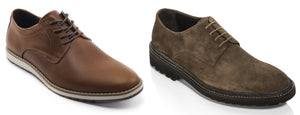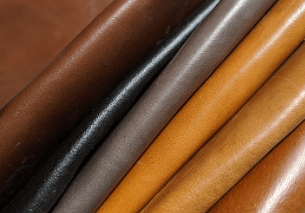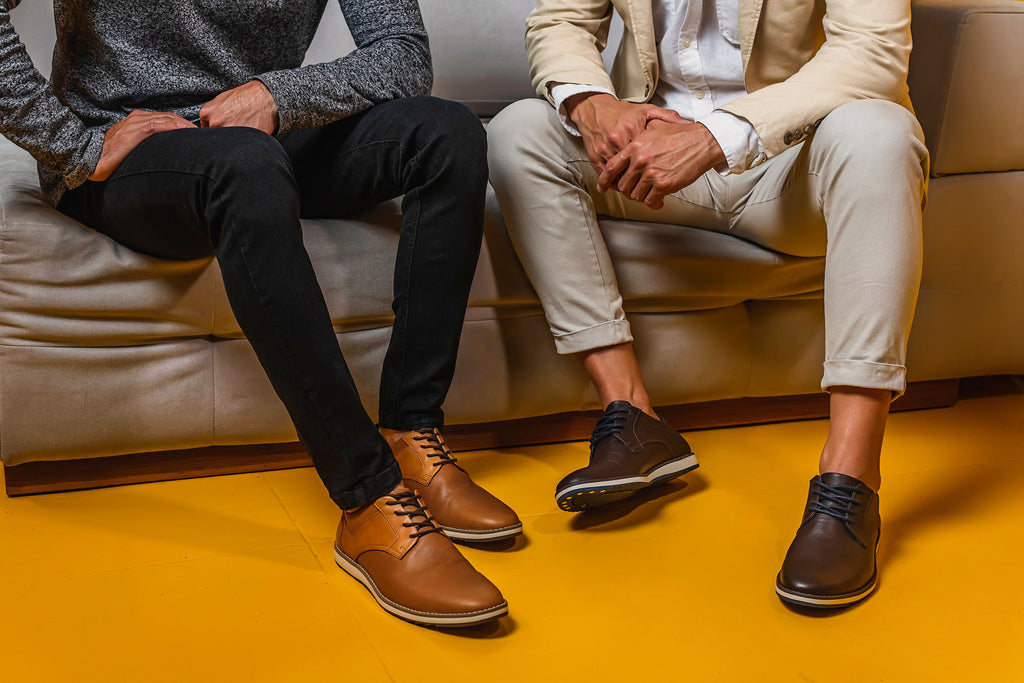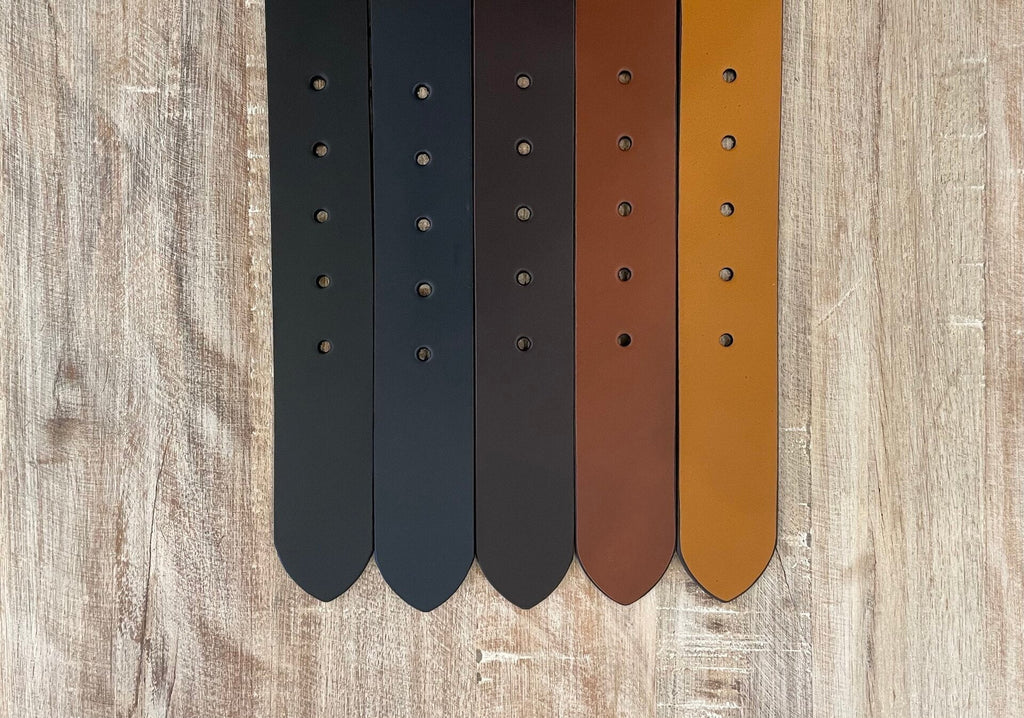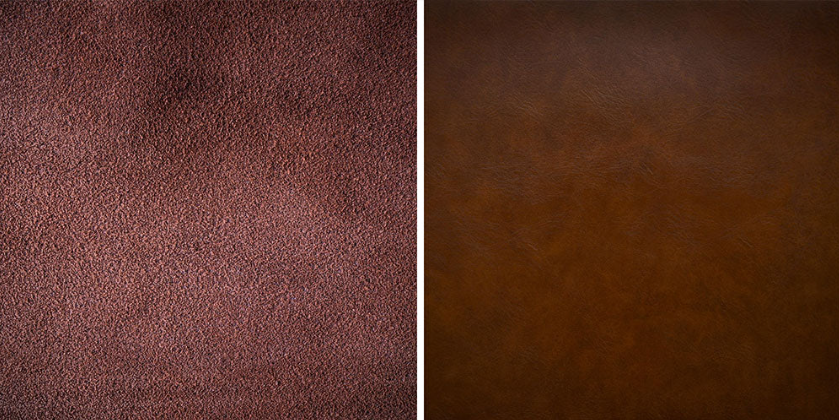
Nubuck vs. Full-Grain Leather
Leather enthusiasts have countless types of leather to choose from. Two popular types are nubuck and full-grain leather. Understanding their differences can help make informed decisions when purchasing leather products.
As a purveyor of fine leather goods, we wanted to put this guide together to help you understand the primary differences between nubuck and full-grain leather.
The Short Answer: What’s the Difference Between Nubuck and Full-Grain?
Nubuck leather is sanded on the grain side to create a soft, velvet-like surface, making it more prone to staining and wear. Full-grain leather retains the natural grain, offering superior durability and a more rugged look. Choose nubuck for a luxurious feel and full-grain for long-lasting strength.
What is Full-Grain Leather?
Full-grain leather, often used in shoes, wallets, and leather bags, is made from the hide's top layer, including all of the natural grain. Unlike other leathers, it is not sanded or buffed to remove imperfections. This process preserves the hide's natural texture and markings, giving each piece a unique appearance. Full-grain leather is known for its durability and ability to develop a rich patina over time.
What is Nubuck Leather?
Nubuck leather is created by sanding the outer surface of the hide, resulting in a soft, velvety texture. This sanding process enhances its aesthetic appeal, making it popular for fashion and luxury goods. However, Nubuck is more susceptible to stains and scuffs than other leathers. It requires special care to maintain its appearance, including regular cleaning and protective treatments. Nubuck is often used in high-end shoes, jackets, and upholstery, offering a combination of elegance and comfort.
Key Differences Between Nubuck and Full-Grain Leather
Nubuck and full-grain leather differ significantly in texture and appearance. Nubuck has a soft, velvet-like surface due to sanding the grain side, while full-grain leather retains its natural, rugged texture with visible grain patterns. In terms of durability, full-grain leather is sure to last longer, making it ideal for everyday carry items and shoes. Though aesthetically pleasing and preferred by some, Nubuck requires more maintenance and care to prevent stains and scuffs.
Pros and Cons of Full-Grain Leather
Pros:
- Highly durable and long-lasting.
- Develops a rich patina over time.
- Natural, unique grain patterns.
Cons:
- It can be more expensive than other types of leather.
- Requires regular care to maintain its appearance.
- It is less uniform in texture, especially lighter colors, which might not appeal to everyone.
Pros and Cons of Nubuck Leather
Pros:
- Soft, luxurious feel and velvety texture.
- Aesthetically appealing and elegant.
- Suitable for high-end fashion and luxury items.
Cons:
- More prone to stains and scuffs.
- Requires more frequent maintenance and care.
- Generally less durable than full-grain leather.
Final Thoughts on Nubuck and Full-Grain Leather
Nubuck and full-grain leather offer distinct benefits and drawbacks. Nubuck is ideal for those seeking a soft, elegant appearance, while full-grain leather is better suited for durability and a unique, natural look. Consider your specific needs and preferences when choosing between these two types of leather, and if you’ve decided you prefer full-grain, make sure you look through our products!
- Choosing a selection results in a full page refresh.
- Press the space key then arrow keys to make a selection.


